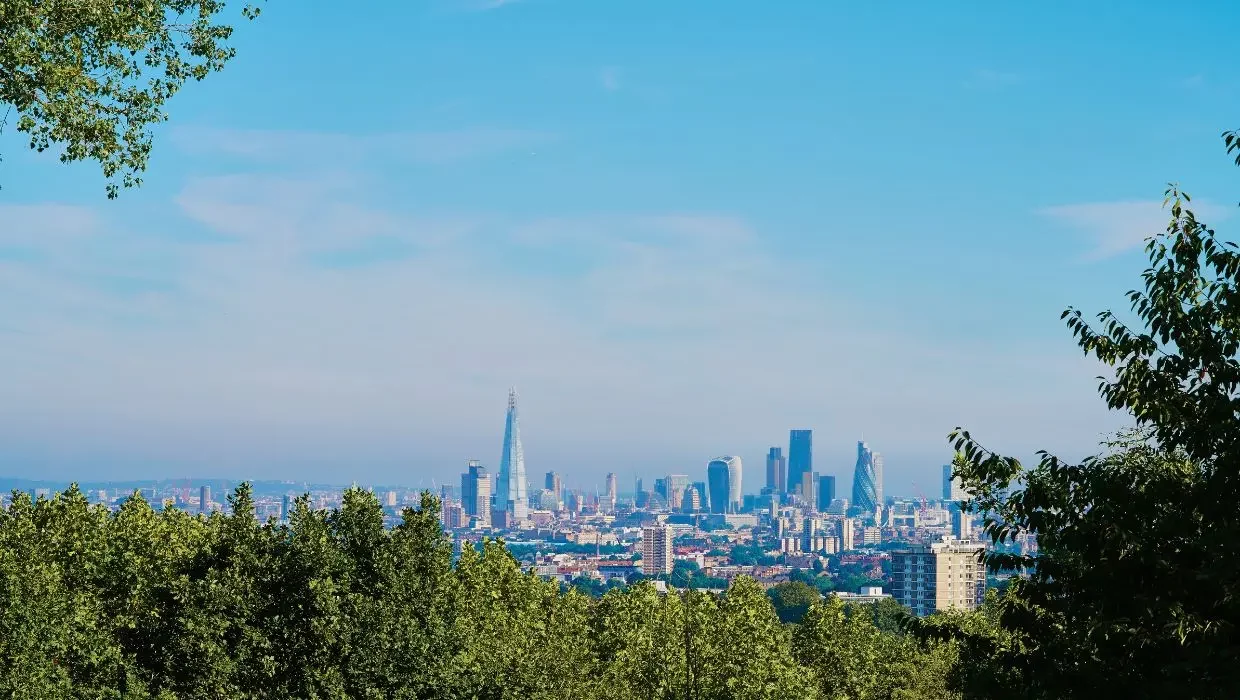Ground level ozone is a transboundary air pollutant, travelling and originating from areas far and wide. We consider how this international issue should be tackled.
Tropospheric ozone is an air pollutant that poses serious risks to human and ecological health. Concentrations are increasing, exacerbated by climate change and other sustainability challenges. However, the fact that ozone is a transboundary air pollutant adds another layer of complexity to the problem. In this article, we explain national and international ozone limits and discuss what a global response to the issue should look like. We also run through Enviro Technology’s range of options for ozone monitoring.
Ozone limits
Under The Air Quality Standards Regulations 2010, the UK Government has a target value for ozone of 120 µg/m3, which should not be exceeded on more than 25 days of the year. In the long term, the Government is aiming for no day to exceed this figure.
Given the threat ozone poses to human health, there are certain ozone concentrations – specified in the above legislation – at which people must be made aware of the possible risks. At an hourly value of 180 µg/m3, the Government must inform the public, and at 240 µg/m3, an alert must be issued.
Information events and alerts usually occur during the summer (the “ozone season”). For example, the Government issued a warning on the eve of the 2012 Olympics opening ceremony, with the Founder and Director of Clean Air London saying it was the “worst ‘summer smog’ for years.”
Ozone is also included in the World Health Organisation’s (WHO) Air Quality Guidelines (AQG). The AQG are based on expert knowledge and evidence from a range of countries. They are stricter than the UK’s objectives, but are not legally-binding, designed instead to allow countries in different political, economic, and technical contexts to be able to work towards better air quality.
The WHO AQG for ozone is 100 µg/m3 (over an 8-hour period). Research has found that this was exceeded 22 times in London between March and May 2020 – the period of the first COVID-19 lockdown. It is thought that the dramatic reduction in traffic led to lower nitrogen oxide emissions, which, whilst ozone precursors, can also break ozone down. This is why, as society transitions to low or no-emission electric vehicles, ozone pollution may worsen.
Where does ozone come from?
Ozone is not emitted directly but formed in the air from complex chemical reactions between other pollutants and sunlight. These precursor pollutants are mainly nitrogen oxides and volatile organic compounds, released from vehicles, industry, and natural sources.
Once formed, ozone can persist in the troposphere and be transported long distances. As a result, ozone pollution in one locality has often originated elsewhere. A study published last year assessed the different sources of European nations’ ozone pollution and their respective contribution to ozone-related deaths.
Domestic sources contributed to 11.7% of deaths, pollution from other European countries led to 20.9%, and ozone from outside Europe was associated with 56.7% of mortality. From these figures and a wealth of other knowledge, it is clear that tropospheric ozone is an international issue that requires a global response.
Global-level action
What should this global response look like?
Systematic quantification of ozone pollution
According to the authors of the above study, systematic quantification of ozone is an essential first step in the formulation of mitigation strategies, whatever their scale. In particular, the contribution of different sectors or activities to ozone pollution should be analysed. This will shed light on the most pertinent interventions. For example, Achebak and colleagues found that, in the Mediterranean, the contribution of maritime emissions to ozone-related mortality was considerable. This information could inform the implementation of interventions such as the North Sea Emission Control Area (ECA), which requires vessels operating in the North Sea to have nitrogen oxide abatement technologies.
How should ozone be measured?
Ozone can be measured in several different ways – and at different price points. The most traditional approach is to use a UV absorption ozone analyser such as the MCERTS-approved Teledyne-API N400. This is the UK’s “reference method”, with UV absorption ozone analysers used in the national air monitoring network and elsewhere in the world. Enviro Technology also offer a lower-cost, more compact UV absorption analyser: the Teledyne-API Model 430.
In contrast to traditional “point-sampling” analysers, ozone can also be measured with several open-path remote-sensing instruments, many of which also measure other significant air pollutants like nitrogen dioxide and sulphur dioxide. This includes the MCERTS-approved OPSIS System 300, which can be further expanded to include gases like ammonia and benzene.
Multi-axis differential optical absorption spectroscopy (DOAS) systems are another advanced, “research-grade” remote ozone-sensing system. An example is the AirYX SkySpec MAX-DOAS system. SkySpec is a direct sun DOAS system for measurement of stratospheric and tropospheric total columns of various gases as well as aerosol optical depth.
Regarding small, compact, “fit and forget” ozone measuring devices, Enviro Technology are exclusive UK suppliers of the bettair® node. This web-enabled, mains and solar-powered, budget-friendly instrument can measure nitrogen dioxide, particulate matter (indicative MCERTS-certified), and noise as well as ozone.
If you need an ozone monitoring solution, please get in touch.
International agreements
The Convention on Long Range Transboundary Pollution (LRTAP) covers ground-level ozone and is “the only regional policy solution of its kind anywhere in the world”. It is overseen by the United Nations Economic Commission for Europe (UNECE), but has been ratified by 51 countries including the United States. The UK National Emissions Ceilings Regulations (2018) (NECR) are a result of this convention and set emissions limits and reduction commitments for ozone precursors. The convention, adopted in 1979, established the principles and framework for international cooperation on air pollution. Participation enables countries to benefit from a wide knowledge base and levels the playing field for industrial actors, encouraging adoption of sustainable practices. Expanding participation will only amplify the benefits, with the UNECE carrying out capacity-building in target regions and incorporating flexibility into key protocols to this end.
What’s the difference between the NECR and the Air Quality Standards Regulations?
The National Emissions Ceilings Regulations represent the implementation of the European Union’s National Emissions Ceilings Directive (2016) in UK law. The NECR specify limits for the total annual emissions of a pollutant per year. In contrast to these UK-wide limits, the Air Quality Standards Regulations apply to smaller locales (“zones”) and stipulate concentration limits (e.g., µg/m3), rather than absolute totals.
Continuing the fight against climate change
Experts state that addressing climate change is critical to improving air quality. In the case of ozone, climate warming will make pollution worse as heatwaves and high solar radiation favour ozone’s photochemical formation reactions. However, the effects of climate change may be even more complex. For example, Achebak and colleagues note that global warming will increase the emission of plant-derived volatile organic compounds, which could contribute to ozone formation and potentially undermine efforts to cut precursors from anthropogenic sources. With ozone also a potent greenhouse gas, addressing both climate change and ozone pollution will prevent the issues reinforcing each other. However, current recognition of the links between ambient air quality and climate change is “insufficient”. Ozone is not part of the Paris Agreement and most precursors are not part of climate reporting through the United Nations Framework Convention on Climate Change (UNFCCC).
“Not a justification for local inaction”
While studies have shown that much of an area’s tropospheric ozone pollution originates from remote sources, authors stress that this should not deter action at the local level. Local mitigation measures can “contribute considerably” to staying within ozone limits, and it goes without saying that they reduce the burden on other communities. Indeed, recognising that we are part of a wider community is important, particularly when international sources of ozone precursors are often the result of production of goods and services for consumption at home.




